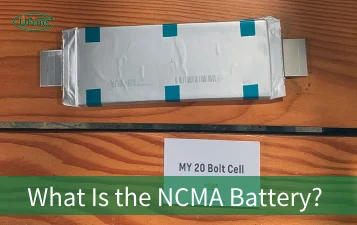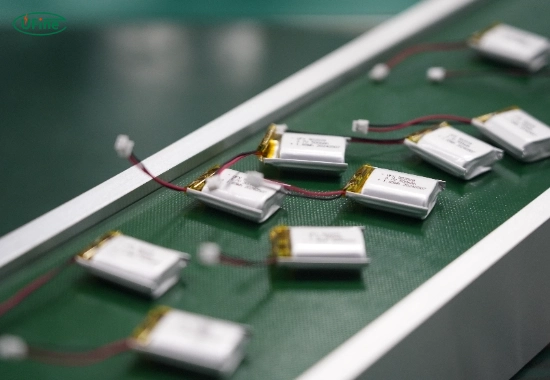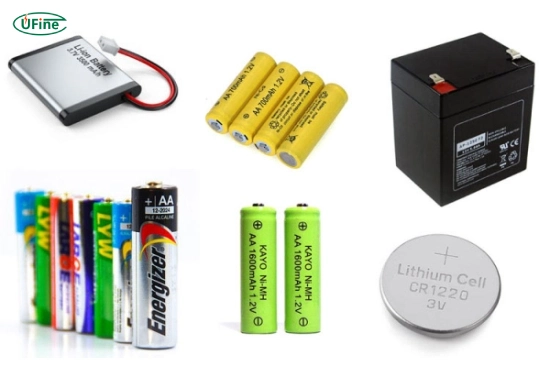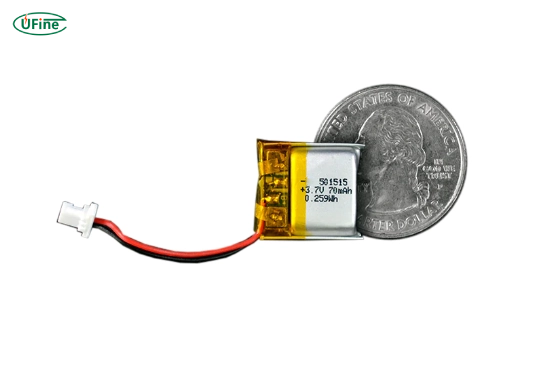
- Part 1. What are small rechargeable batteries?
- Part 2. What are the main types of small rechargeable batteries?
- Part 3. Why are small rechargeable batteries important?
- Part 4. How do small rechargeable batteries work?
- Part 5. How long do small rechargeable batteries last?
- Part 6. What are the advantages of small rechargeable batteries?
- Part 7. What are the disadvantages of small rechargeable batteries?
- Part 8. How can you care for small rechargeable batteries?
- Part 9. What are the common applications of small rechargeable batteries?
- Part 10. How are small rechargeable batteries recycled?
- Part 11. FAQs
Small rechargeable batteries have become an essential part of modern life. These batteries are everywhere, from powering your smartphones, laptops, and wearables to serving as backup energy sources for various devices. But how much do you know about them? In this article, we’ll dive deep into small rechargeable batteries, exploring their types, applications, advantages, and how to care for them properly. This comprehensive guide will help you make informed decisions whether you’re a tech enthusiast, a DIYer, or a curious reader.
Part 1. What are small rechargeable batteries?
Small rechargeable batteries are compact energy storage devices that can be charged and discharged multiple times. Unlike disposable batteries, which can only be used once, rechargeable batteries allow for repeated use by restoring their energy through electrical charging.
Due to their lightweight and energy-efficient nature, these batteries are commonly used in portable electronics, medical devices, and even small tools. There are various types, each with unique characteristics and applications.
Part 2. What are the main types of small rechargeable batteries?
Several types of small rechargeable batteries are tailored for specific uses. Below are the most common types:
1. Lithium-ion (Li-ion) Batteries
Why are Li-ion batteries so popular?
Li-ion batteries are widely used in smartphones, laptops, and other portable devices because of their high energy density, lightweight design, and long lifespan. Compared to different battery types, they recharge quickly and hold their charge longer.
2. Nickel-Metal Hydride (NiMH) Batteries
AA or AAA rechargeable batteries for household devices often use these batteries. What makes NiMH batteries unique? They are environmentally friendly and have a higher capacity than older nickel-cadmium (NiCd) batteries.
3. Nickel-Cadmium (NiCd) Batteries
NiCd batteries were once popular, but their use has declined due to environmental concerns. However, they are still used in some applications because of their durability and ability to handle extreme temperatures.
4. Lithium Polymer (Li-Po) Batteries
Li-Po batteries are similar to Li-ion batteries but are lighter and more flexible, making them ideal for drones, RC vehicles, and slim devices like fitness trackers.
5. Lead-acid batteries
While not as compact as Li-ion or NiMH, small lead-acid batteries are used in backup power systems and emergency lighting due to their reliability and low cost.
The Ultimate Guide to Small Size Battery
Part 3. Why are small rechargeable batteries important?
Small rechargeable batteries play a critical role in modern life. Here’s why:
- Portability: Their compact size enables the creation of lightweight, portable devices.
- Eco-Friendliness: By reducing the need for disposable batteries, they help reduce waste.
- Cost-Effectiveness: While they may have a higher initial cost, their reusability saves money in the long run.
- Versatility: These batteries power various devices, from smartphones to medical equipment.
Part 4. How do small rechargeable batteries work?
The basic principle behind rechargeable batteries is the reversible chemical reaction.
- Charging: Electrical energy is applied, forcing electrons to flow in the reverse direction of their natural discharge.
- Discharging: When the battery is used, chemical reactions release stored energy, allowing electrons to flow and power the connected device.
The specific materials and chemistry, such as lithium ions or nickel compounds, determine the battery’s performance and lifespan.
Part 5. How long do small rechargeable batteries last?
The lifespan of small rechargeable batteries depends on multiple factors, including the type of battery, usage, and care.
- Lithium-Ion Batteries: Typically last 300-500 charge cycles (1-3 years).
- Nickel-Metal Hydride Batteries: Around 500-1,000 cycles.
- Nickel-Cadmium Batteries: Can last over 1,000 cycles but may suffer from a “memory effect” if not fully discharged.
Proper care can significantly extend a battery’s lifespan by avoiding overcharging and exposure to extreme temperatures.
Part 6. What are the advantages of small rechargeable batteries?
Reusable: Rechargeable batteries can be used hundreds or thousands of times, reducing waste.
- Cost-Effective: Over time, their reusability offsets the higher purchase price.
- High Performance: Small rechargeable batteries often provide better energy density and performance than disposable options.
- Environmentally Friendly: Less waste means less environmental impact.
Part 7. What are the disadvantages of small rechargeable batteries?
While they offer many benefits, small rechargeable batteries have some downsides:
- Higher Initial Cost: Rechargeable batteries are more expensive upfront than disposable ones.
- Limited Lifespan: Even rechargeable batteries degrade over time and need replacing.
- Care Requirements: Improper use, such as overcharging or exposure to heat, can damage these batteries.
- Recycling Challenges: Some types, like Li-ion and NiCd, require proper recycling to avoid environmental harm.
Part 8. How can you care for small rechargeable batteries?
Proper care can extend the lifespan and performance of your batteries. Here are some tips:
- Avoid Overcharging: Use chargers with overcharge protection to prevent damage.
- Store Properly: Keep batteries in a cool, dry place when not in use.
- Don’t Drain Fully: Avoid altogether discharging Li-ion batteries, which can shorten their lifespan.
- Charge Regularly: Even if not used, charge occasionally to maintain capacity.
- Use the Right Charger: Always use a charger compatible with your battery type.
Part 9. What are the common applications of small rechargeable batteries?
Small rechargeable batteries are used across various industries and applications:
- Consumer Electronics: Smartphones, laptops, tablets, cameras.
- Wearables: Smartwatches, fitness trackers, hearing aids.
- Medical Devices: Pacemakers, glucose monitors, portable oxygen concentrators.
- Tools: Cordless drills, screwdrivers, and other small power tools.
- Toys and Gadgets: RC cars, drones, and gaming controllers.
Part 10. How are small rechargeable batteries recycled?
Recycling rechargeable batteries is crucial to minimize environmental harm. Most countries have specific protocols for recycling these batteries.
- Collection Points: Many retail stores and recycling centers accept used rechargeable batteries.
- Separation: Batteries are sorted by type (e.g., Li-ion, NiMH) for proper handling.
- Material Recovery: Metals like lithium, cobalt, and nickel are extracted and reused.
Always dispose of batteries responsibly to prevent toxic chemicals from entering landfills.
Part 11. FAQs
-
How do I know when my rechargeable battery needs replacing?
If your battery holds a charge for significantly less time than usual or takes an unusually long time to charge, it may need replacing. -
Can I use any charger for my rechargeable batteries?
No. Always use a charger designed for your specific battery type to avoid damage or safety issues. -
Are rechargeable batteries safe to use?
Yes, when used and charged correctly. However, damaged or overcharged batteries can pose risks like leaks or overheating. -
How can I store rechargeable batteries for an extended period?
Store them in a cool, dry place at around 50% charge to prevent degradation. -
Are rechargeable batteries better for the environment?
Yes, because they reduce the need for disposable batteries, lowering overall waste and resource use.
Related Tags:
More Articles

What is the NCMA battery? What is the difference between it and the NMC battery? Which one is better? This article will answer your questions.
What Is the Lithium Battery Short Circuit?
What is the lithium battery short circuit? To understand a lithium battery short circuit, we first need to understand how the battery works.
How to Distinguish Battery Cells, Battery Modules, And Battery Packs?
Discover how battery cells, modules, and packs work, their engineering roles, and practical guidance for safe and efficient design.
What is the Difference Between Silver Zinc Battery vs. Lithium-ion Rechargeable?
Compare silver zinc and lithium-ion rechargeable batteries: energy density, cycle life, safety, cost, and uses in drones, medical devices, EVs, and electronics.
What are Watts and Watt Hours in Battery?
Understand watt vs watt-hour in batteries: key differences, how to calculate capacity, and why they matter. Includes free comparison table.





